Self Sufficiency
Cattails Survival Uses
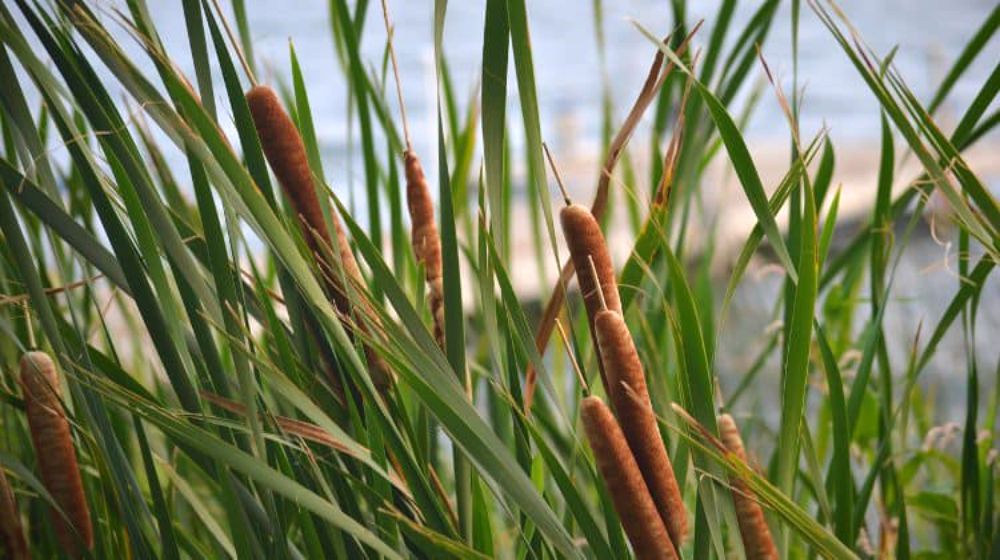
Surprisingly enough, cattails can be a great survival resource. It doesn’t matter if you are caught in the wild or even in the city; there is one plant, if you can find it, it will provide you with an entire pantry’s worth of supplies. It is the simple cattail. It is said, cattails are the supermarket of the wild. One cattail fact says archeologists have actually found samples of this plant on ancient grinding stones dating back nearly 30,000 years.
Cattails: Common Plant To A Terrific Survival Resource
In This Article:
Cattail Survival Uses
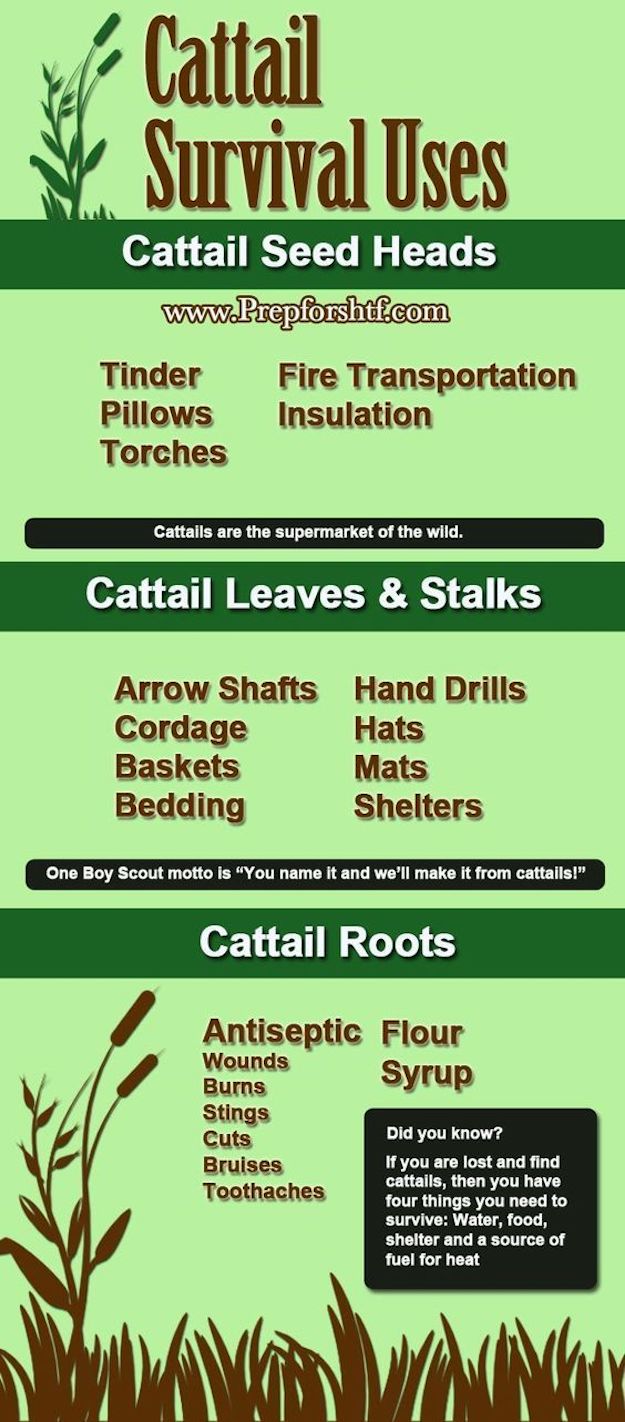
This infographic is courtesy of PrepforSHTF.com
Cattail Seed Heads
This brown cigar-like shape contains thousands of seeds that will later burst open to be dispersed by the wind. It is also called corndog grass or punk by some people.
1. Tinder
When ripe, the seed hairs are dry and become highly combustible to be used as tinder. The native Americans were known to have used this abundant material to start fires.
2. Pillows
The seed hairs are soft and fluffy if you can gather enough of them you can actually stuff them in pillows. If you can manage to get more than enough some are known to have made a mattress out of it.
3. Torches

Soak up the cattail in oil or animal fat to make this torch burn much longer. It can provide you with a maximum of 6 hours of light or heat if soaked up right.
4. Fire Transportation
If you just wish to light a certain area or something on fire, you can use a cattail as a form of transporting fire from one thing or area to the other.
5. Insulation
These fluffy seeds were also used to line the mocassins and clothing of early Indians. It was even known to have been used for beddings, headgear, diapers, and cushions for cradleboards.
- Hardcover Book
- Hartung, Tammi (Author)
- English (Publication Language)
Cattail Leaves & Stalks
The leaves and stalks are known to grow to a maximum of 3 meters in length. And having flat and thick leaves these parts had a lot of uses for those who were trying to survive in the wild.
1. Arrow Shafts
Considering the stalks grow to 3 meters long and are more often straight, there is very little “straightening out” to be done. Just remove any excess leaves and unneeded parts then dry it out under the sun. They will soon turn brown and become sturdy enough to be used as arrows. Plus, there are a lot of them out there so you don’t have to worry about running out of arrows.
2. Cordage
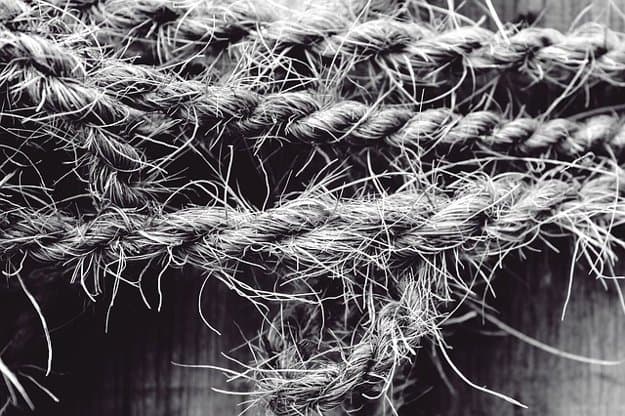
The leaves are broad and thick which makes them sturdy cordage material. With 12 to 16 leaves per plant, you will not worry about running out of rope for survival uses.
3. Baskets
Other than cordage, you can also use them for making baskets. With a little bit of patience and know-how, you can make different kinds of baskets with the leaves after you let them dry up.
4. Bedding
As previously mentioned, the soft fluffy parts of the cattail can be made into beddings. You just have to collect more than enough to make one.
5. Spindle
With the right material such as popular fireboard and the cattail stalk as a spindle, you can actually make an ember by spinning the stalk on the board. With the right friction pressure and speed, you can start a fire with it.
6. Hats
You can make hats with the leaves when freshly harvested. It becomes sturdier as the leaves dry up. You will have to come up with the proper weaving skill set to accomplish, though.
7. Mats
With long leaves that reach up to 10 to 20 mm wide and 3 meters in length, plus, the cross section coming in a D-shaped, this makes it a desirable material for making a mat.
8. Shelters
One Boy Scout motto is “You name it and we’ll make it from cattails!” Somehow you can even make a teepee-like shelter using the freshly uprooted cattail plants.
Cattail Roots
Don’t be surprised but the roots, like most of the parts of the plant, cattails are edible. These can produce food material such as the following:
1. Flour
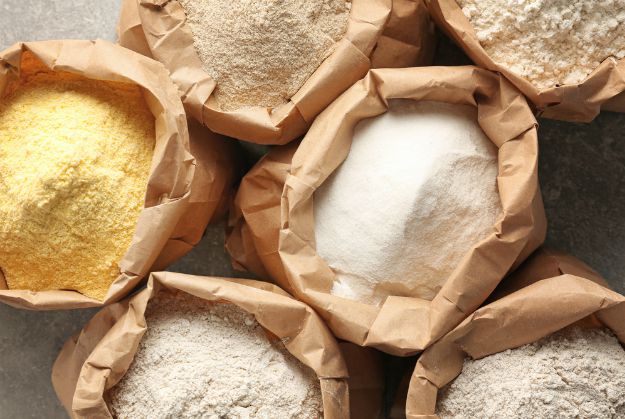
You can grind out flour out of the roots and use it to thicken your stew or soup. Just dry out the roots thoroughly and you can grind them out using a round rock.
2. Direct Food Source
Wash and clean the roots. Then cut them into thin slices before frying them in a pan. Fry until they turn brown in color. They give a similar taste to potatoes if you ask me.
Watch this video on the many uses of cattail posted by Birch Point Outdoors:
https://www.youtube.com/watch?v=1Zha-RSySRA
So many people walk right past a stand of cattails, never even giving them a thought. But, with a little know-how, it can easily save your life. Here are 5 local edible plants and how to identify them just in case you’re still in search of plants like cattails. There are also ways on how to prepare food kits for survival you might want to learn to make. Another plus factor on cattails is you can find them all over the United States. So if you’re ever caught outside, for whatever reason, once you find a marsh or pond with cattails, you have just about all you need to survive.
- Powerful cutting blades designed to easily and effectively cut through all types of aquatic weeds...
- Durable construction using high-quality materials for long-lasting use in ponds and lakes of all...
- Includes razor sharpener, rope and blade covers
Do you have any more uses for cattails you think we missed? Please don’t hesitate to add them in the comments section below!
Up Next: 10 “Pretty Plants” You Didn’t Know Were Poisonous
Follow us on Facebook, Instagram, Twitter, Pinterest, and Tumblr!
The contents of this article are for informational purposes only. Please read our full disclaimer.
Editor’s Note – This post was originally published in April 2017, and has been updated for quality and relevancy.
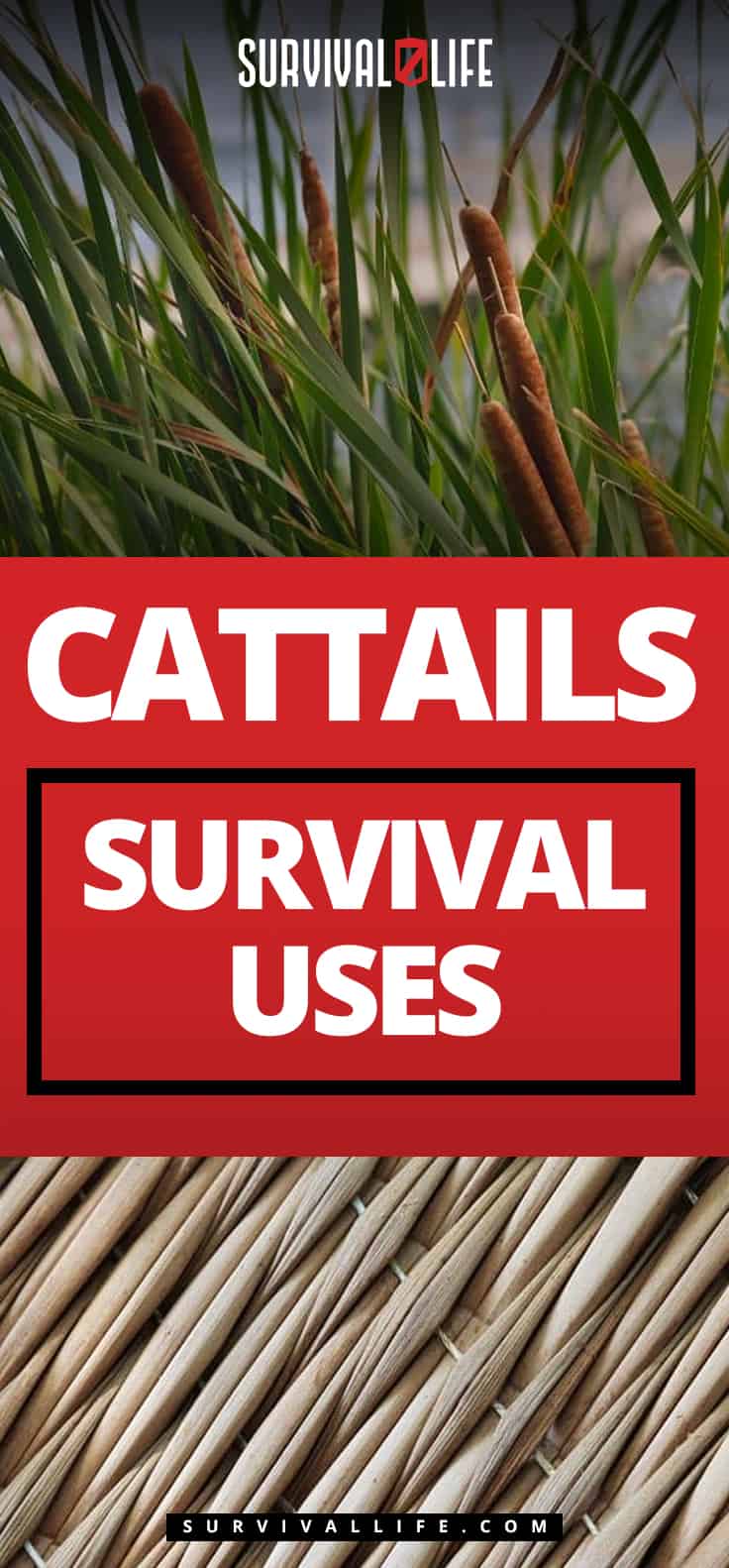
Last update on 2024-04-19 / Affiliate links / Images from Amazon Product Advertising API
-

 Do It Yourself7 months ago
Do It Yourself7 months agoParacord Projects | 36 Cool Paracord Ideas For Your Paracord Survival Projects
-

 Do It Yourself9 months ago
Do It Yourself9 months agoHow To Make Paracord Survival Bracelets | DIY Survival Prepping
-

 Do It Yourself9 months ago
Do It Yourself9 months ago21 Home Remedies For Toothache Pain Relief
-

 Do It Yourself10 months ago
Do It Yourself10 months agoSurvival DIY: How To Melt Aluminum Cans For Casting
-

 Exports8 months ago
Exports8 months agoAre Switchblades Legal? Knife Laws By State


Chuck C
January 17, 2013 at 7:19 AM
One of the major concerns in survival is disease from human waste. Transplant catails near where your make shift septic tank, leach field, or run off are. The catails will absorb the waste and turn it into oxygen.
Anonymous
September 11, 2018 at 9:36 PM
Then eat the roots
Dick
January 17, 2013 at 7:25 AM
I have pulled the roots in the rearly Spring and after washing cut them into a salad, ” Cossack Padishes”
Art
January 17, 2013 at 8:19 AM
When we were kids we use to get them when they dry. Catch the end on fire . It will burn as an ember.But it sure kept the mosquitoes away from us when we were camping.
Mac
January 17, 2013 at 9:09 AM
Avoid cat tails near railroad tracks, highways, industrial plants, as they are often sprayed with chemicals that may be toxic. You can use them for the other things , just don’t eat them. Happy harvesting!
charles
January 17, 2013 at 9:52 AM
one can also eat the root of “skunk cabbage”, another marsh/swamp plant. the root bulb can be boiled kind of like fennel. never had it but it is said it does not taske like the leaves which do smell like skunk.
Pingback: Survival Superstore – Survival Life | Wilderness and Survival
Nonie
January 17, 2013 at 11:35 PM
Thanks for this great article. Very useful. I was not aware of most of this info as well as other info posted on the comments.
I thought that cattails were protected?
I have heard that there are fines for picking cattails which usually grow in wetland/protected areas. Am I wrong?
If it came to survival or in an emergency situation I would have not problem with using them anyway.
PUNISHER
October 28, 2013 at 6:11 PM
YOUR RIGHT. IN CALIFORNIA , IT’S ILLEGAL TO EVEN TOUCH THEM. THE ONES THAT GROW IN THE HILL AREAS OF SO. CAL ARE THE BAD ONES YOU HAVE TO GO NORHT ABOUT 2.5 HOURS WHERE THERES A FEW LAKES THAT HAVE THE NON POISONOUS ONES. TO BAD YOU CAN’T USE THEM AS A WASH BRUSH LIKE DAFFY DUCK DOES.LOL!WHEN I WAS YOUNG , WE WENT QUIAL HUNTING IN THE ORANGE GROVES IN FILMORE. THEY HAD A BIG STREAM FULL OF DUCKS AND CATTAILS. NEVER HAVE TASTED ONE, BUT THE STOCKS ARE GOOD TO CHEW ON, LIKE A TALL WEED. I HAD A MARLIN 22LR WITH A 10 ROUND MAG. WE USE TO SEE HOW MANY SHOTS IT WOULD TAKE TO SHOOT ONE OFF THE STALK. THAT WAS IN THE 60’S.THESES DAYS , NO ONE ALLOWS ANYONE TO HUNT ON THERE LAND, UNLESS THERE A SPORTING CLUB. WHERE THEY PLANT THE GAME FOR YOU AND THEN YOUR GUIDE TAKES YOU WITH HIS DOG TO FLUSH THEM OUT. SICK!THAT’S PUSSY RICH PEOPLES HUNTING.SO IF YOU WANT TO HUNT IN THE WILDERNESS, YOU HAVE DRIVE FOR HOURS INTO THE MOJAVE DESERT.
Michele Bernier
November 8, 2013 at 10:38 AM
Here in Va. I don’t allow anyone to hunt my property, due to hunters killing babies and pregnant Does, then, never fail, I give One Person permission to hunt, they show up with a truck load of guys, a cooler of Beer, and a tree stand. Now News… Deer that are sick, due to ‘Deer Aids’ which ‘they’ are calling Chronic Wasting Syndrome, will have a White Spot, or, White Spots on the Liver. So Guys ‘n Gals, when you field dress – check that Liver.
Allen
January 18, 2013 at 1:08 AM
I just wanted to add that they grow in places other than North America too.
Wayne
January 18, 2013 at 9:10 AM
More info on the toxic version of cattails. A little off topic… there’s a nearby stream that has a lot of feral bamboo stands. Is that useful for anything?
Chuck
January 21, 2013 at 7:55 PM
Is it bamboo or arundo? Arundo is an invasive species that has grown very vigorously in certain areas of California where it was planted for its usefulness but it didn’t develop the commercial uses that were envisioned and now it is an invasive pest.
EcoStyx
October 28, 2013 at 2:57 PM
Are these different than rivercane? I know that rivercane is pretty common in the states. Just like bamboo( not sure if it actually is a species of bamboo) in looks and how it grows in divided sections. These sections are useful to make water canteens and rain catchers also do great in means of cooking on a fire( boiling wild game,or Flora for vitamin rich teas) you could even use this plant to make traps of sorts, shelters, raised beds etc. Let your imagination do the work for you.
David Fisher
October 28, 2013 at 10:13 AM
Great information. Thanks. 🙂
Chuck
October 28, 2013 at 2:16 PM
Arundo is reputed to be related to rattan. If it actually is, then it has useful purposes such as making huts, furniture and makes a very handy walking stick. For a while Cold Steel was selling rattan poles for hiking poles and walking sticks. They are now selling polypropylene in place of the rattan. In India, rattan has been used by the police as clubs for crowd control. The British used it for beating criminals “forty strokes with cane”. I haven’t personally examined arundo to see if it is as close to rattan as it is reputed to be.
Rattan has a solid core. It actually isn’t solid, but appears to be to the naked eye. It actually is a bundle of fibers which is what makes it light for size and exceptionally strong for size.
Bamboo has so many uses it would take a book to list them all. Bamboo, of course, is hollow yet light and strong. In the Orient it used to be used for everything. Lashed together, it was used as scaffolding for building construction. Veterans of our Viet Nam exercise have fond memories of pungee sticks (or punji sticks) that the NVA used quite effectively when they didn’t have explosives. Water pipe is a good use. Blow gun; uses are limited only by your imagination.
cda
October 29, 2013 at 12:12 PM
i have used all parts of the catail plant i live in south mississippi it grows every where the fluff is so easy to start a fire with i no longer use matches just make sure you fluff it out and strike a spark it lights fast and burns fast put your other tinder on it before you spark it we also have lots of saw palmedow growing so i use it for shelters
Pingback: How To Use The Common Cattail For Survival – Online Survival Blog & Survival News – Online Survival Blog & Survival News | Contra
Pingback: 10 things I learned about survival at College for Kids | Behrend Blog
Pingback: surviveturk.com » Su Kamışının Survival Kullanımı
Pingback: Surviving with Edible Plants | Survival Life
codyassmann
December 9, 2017 at 8:58 PM
Great article and thanks for sharing. I also put together a list that you, or other folks, may enjoy. Cattail certainly is one of those plants that offers lots of abundance to someone living off the land. Thanks!
https://softtracks.org/2017/03/03/8-uses-of-cattail-from-hunting-to-dinner-plate/
Mary Judith Conklin
January 29, 2018 at 5:43 PM
Thank you for this excellent info on cattails.
Pingback: Cattails Survival Uses - Survive!
Elaine Susan Hilliker
July 28, 2018 at 6:56 PM
Good info in the text, but I think you shuld find a different video to use. That kid was terrible.
Pingback: Introducing Frailejones: The Andes’ Perfect Survival Plant | Primitive technology
Pingback: Introducing Frailejones: The Andes’ Perfect Survival Plant
Pingback: Introducing Frailejones: The Andes’ Perfect Survival Plant - Survival Patch
Pingback: Introducing Frailejones: The Andes' Perfect Survival Plant | Survival Life